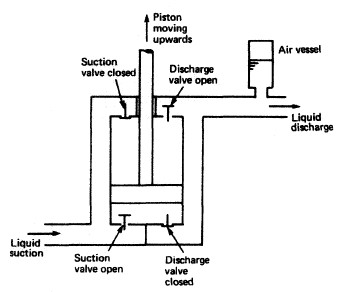
Marine Reciprocating Displacement Pumps
A pump is a machine used to raise liquids from a low point to a high
point. The displacement pumping action is achieved by the reduction or
increase in volume of a space causing the liquid (or gas) to be physically
moved. The method employed is either a piston in a cylinder using a
reciprocating motion, or a rotating unit using vanes, gears or screws.
A reciprocating displacement pump is shown diagrammatically in
figure here, to demonstrate the operating principle.



